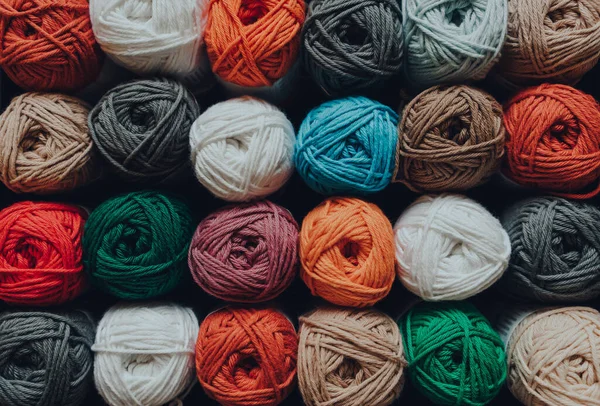Hand Embroidery: A Strategic Approach to Tools and Textiles
Hand embroidery, an art form with a legacy stretching back millennia, represents a sophisticated interplay between artisan, tool, and textile. [1] Its successful execution is not merely a matter of creative vision but a calculated selection of materials that dictates the final texture, durability, and aesthetic integrity of the work. For both the nascent hobbyist and the seasoned professional, a deep, technical understanding of the foundational components—the tools that shape the stitch and the fabrics that serve as its canvas—is paramount. This report will dissect the essential toolkit and the critical characteristics of suitable fabrics, providing a framework for deliberate and informed material selection in the pursuit of high-caliber hand embroidery.
The Precision Toolkit: Beyond the Basics
The efficacy of an embroiderer is directly proportional to the quality and suitability of their tools. While the list of essentials is concise, the nuance within each category is vast. The needle, the most fundamental of these tools, is a prime example of specialized design. Crewel needles, often considered the standard for surface embroidery, possess a sharp point and a medium-long eye, engineered to pierce tightly woven fabrics like cotton or linen with minimal resistance while accommodating various thread thicknesses. [2][3] In contrast, tapestry needles, with their blunt tips and large eyes, are purpose-built for counted-thread work on evenweave fabrics like Aida, where the goal is to pass through existing holes in the fabric grid rather than create new ones. [4][5] For techniques involving wrapped stitches, such as French knots or bullion knots, the milliner (or straw) needle is indispensable; its uniform shaft diameter from eye to tip prevents the wrapped thread from snagging as the needle is pulled through. [2][6] Similarly, chenille needles offer a sharp point like a crewel but feature a larger, longer eye, making them ideal for working with thicker threads like wool or for piercing dense fabrics such as denim or felt. [2][5] The selection of a needle is therefore a strategic decision, balancing the fabric’s weave, the thread’s weight, and the intended stitch’s mechanics. Complementing the needle, exceptionally sharp, fine-tipped embroidery scissors are non-negotiable for cleanly snipping threads flush with the fabric, preserving the neatness of the work. [4]
The Medium of Expression: Thread and Its Properties
The thread, or floss, is the literal and figurative lifeblood of an embroidery project, providing color, texture, and dimension. The industry standard is six-strand mercerized cotton floss, with brands like DMC and Anchor being globally recognized for their quality, extensive color palettes, and colorfastness. [7][8] The genius of this thread lies in its divisibility; an artist can choose to use a single strand for fine, delicate detail work or all six strands for bold, impactful lines. [9] This variability allows for a high degree of control over the texture and coverage of the stitches. Beyond standard cotton, other threads offer unique properties. Pearl (or Perle) cotton is a non-divisible, two-ply thread with a distinct twisted appearance and a high sheen, available in various weights (numbered #3 for thickest to #12 for finest) to create different textural effects. [10] For projects demanding luxury and a different hand-feel, silk, wool, and linen threads provide alternative textures and sheens. [9] The choice of thread extends beyond color, becoming a critical element in the overall design composition. For instance, a rustic, historical sampler might be best rendered in the matte finish of linen thread, while a vibrant, modern piece could be enhanced by the luster of silk or the sparkle of metallic threads. [7][10]
The Foundation: Selecting the Appropriate Fabric
The choice of fabric is arguably the most critical decision in a hand embroidery project, as it provides the structural foundation for the stitches. The ideal ground fabric is typically a natural fiber—such as cotton, linen, or a blend—with a stable, full, and even weave. [11][12] This type of weave, where the warp and weft threads are closely packed without significant gaps, provides the necessary support for surface embroidery techniques that involve dense stitch-work like satin stitch or long-and-short stitch. [13][14] The fabric’s weight, often measured in grams per square meter (GSM), is another vital consideration; a medium weight (around 150-200 GSM) is generally preferred as it is substantial enough to support the tension of the stitches without being difficult to pierce with a needle. [13] For beginners, 100% cotton fabrics like Kona cotton or high-thread-count muslin are excellent starting points due to their smooth surface, affordability, and stability. [11][15]
Linen, a textile with a history stretching back over 30,000 years, is a perennial favorite for its durability, classic texture, and strength (it is one of the few fibers stronger when wet than dry). [16][17] Its natural irregularities, or “slubs,” can add character to a piece, though a high-quality, evenweave linen is preferred for fine, detailed work. [14][15] Due to its tendency to shrink, pre-washing linen before stitching is an essential preparatory step. [18] For counted-thread techniques like cross-stitch or blackwork, specialized evenweave fabrics are required. [19] These fabrics, which include Aida cloth, Jobelan, and Lugana, are woven with a precise, uniform number of threads per inch in both directions. [20][21] Aida cloth is particularly beginner-friendly, as its construction creates a clear grid of squares with distinct holes at each corner, simplifying the counting process. [20][21] Evenweave fabrics like Lugana (a cotton/rayon blend) offer a softer hand and allow for more detailed fractional stitches, making them a preferred choice for more experienced stitchers seeking a refined finish. [21][22] Ultimately, the fabric must complement the intended embroidery technique and the final purpose of the project, ensuring both aesthetic success and long-term durability.



